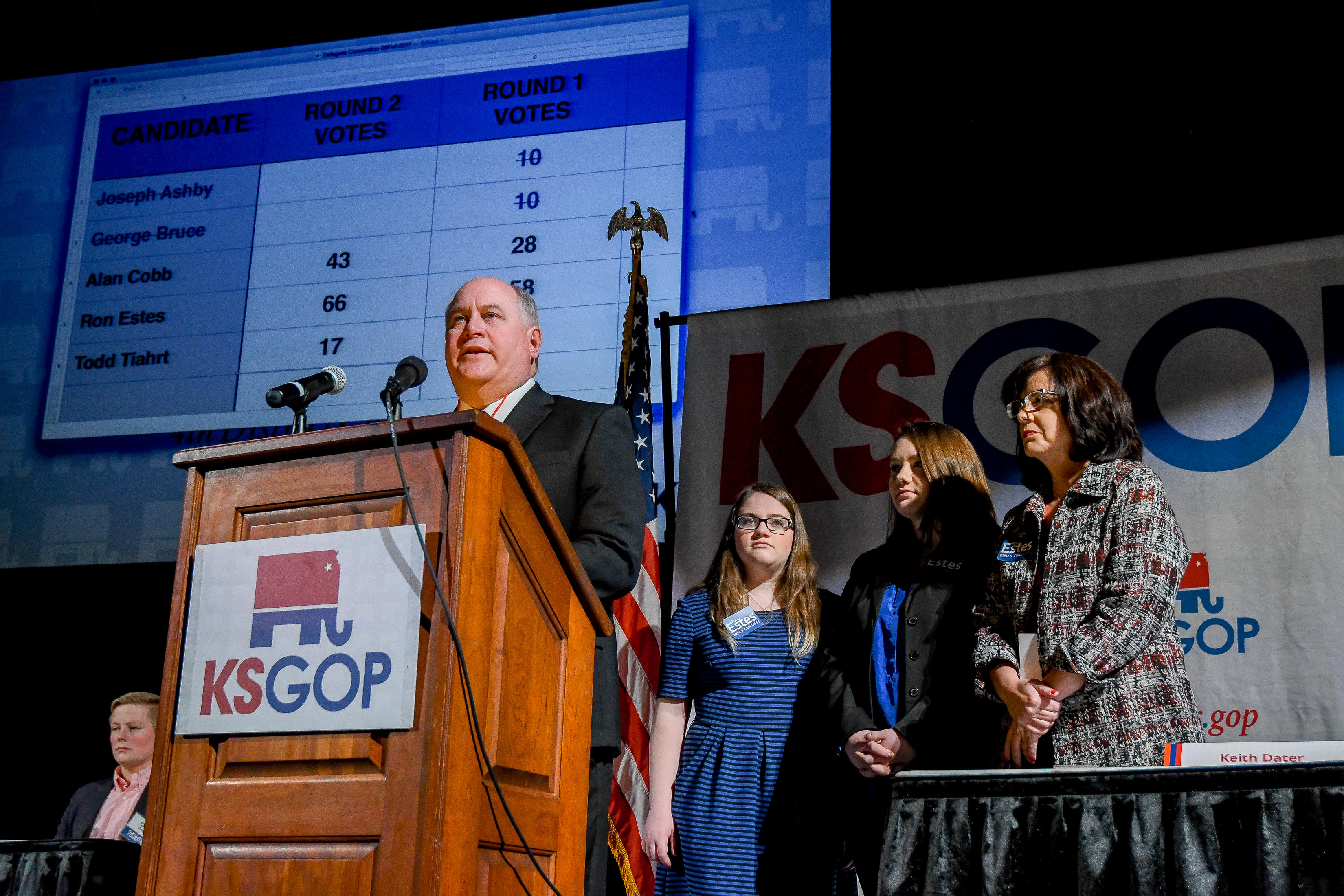What do the Kansas and Georgia elections tell us about 2018?
Here's why Democrats are pumped


President Trump is historically unpopular, and the question on everyone's minds this month is how much of that unfavorability could overflow into the 2018 elections. The special elections in Georgia and Kansas to replace Trump's Health and Human Service Secretary Tom Price and the Director of the CIA, Mike Pompeo, respectively, might offer an early, if revealing, testing ground for how things could go next November.
To take back the House, Democrats will need to net 24 seats in 2018, a task that many analysts once considered almost impossible due to the slim number of competitive congressional districts on the map. "In the next Congress, there will be fewer than two dozen House Republicans sitting in congressional districts won by Barack Obama in 2012," The Washington Post's Stuart Rothenberg writes. "That means Democrats will need to swipe at least a handful of districts carried by Mitt Romney four years ago to win control, and that is a huge, uphill fight for the Democratic Congressional Campaign Committee."
But that was all before Tuesday night.
The Week
Escape your echo chamber. Get the facts behind the news, plus analysis from multiple perspectives.

Sign up for The Week's Free Newsletters
From our morning news briefing to a weekly Good News Newsletter, get the best of The Week delivered directly to your inbox.
From our morning news briefing to a weekly Good News Newsletter, get the best of The Week delivered directly to your inbox.
Republican Ron Estes still managed to win Kansas' 4th district, but it wasn't nearly the blow-out it should have been. His opponent, James Thompson, was a relative nobody and dramatically underfunded by comparison — $100,000 was spent on ads by the Republican Party in the state, while the Democratic Party declined to spend even just $20,000 on campaign mailers.
And while the district typically has twice as many registered Republicans as Democrats, the early vote split 44.5 percent Democratic and 43.5 percent Republican, one GOP pollster told CNN — a usual signpost of a heavily energized base. "The Democratic base is fully mobilized and unlikely to be defused," said one Republican House member who wanted to speak under anonymity. "We will have to beat them. That will take motivating our base. So far we have not."
But Estes' underperformance is a big flashing alarm for Republicans. Admittedly, Estes had several factors working against him — for one, he was the treasurer under the unpopular Republican Gov. Sam Brownback, who is blamed for ruining the state's finances. But consider that Estes won by just 6.8 percent, compared to President Trump's 27 percent margin on Hillary Clinton in the same district in November. That is a massive flop — a bruising margin of 20.3 points. Nate Silver did the math and concluded that "if every district behaved like that, Dems would gain 122 (!) House seats next November." And after crunching Dave Wasserman's numbers, The Washington Examiner similarly concluded that "if turnout across all 435 districts followed this same pattern of partisan participation, then Democrats would win a 314-seat majority in the 435-seat House of Representatives next year."
But Democrats will need to step up significantly, and that's where Georgia comes into play. While the Democratic Party was more or less resigned to losing Kansas (perhaps to their great detriment, as Paul Blest notes), Georgia is turning into a comparatively fierce battleground. Democrat Jon Ossoff is heavily funded and has 70 paid staffers, which NPR writes is "triple the usual House campaign." He is currently dominating the race with the support of 43 percent of likely voters (the next highest-polling candidate is Karen Handel, a Republican, with 15 percent) and the April 18 election is just around the corner.
A free daily email with the biggest news stories of the day – and the best features from TheWeek.com
But Ossoff will still need more than 50 percent of the vote if he is to avoid a June 20 runoff, where his chances of seizing a plurality in the conservative district slim considerably.
And while Wasserman notes that Democrats won't need to see the same 20 percent overperformance across the country that they saw in Kansas, "if they can't win [congressional districts] Trump won by 1.5 percent," as is the case in Georgia's 6th, "they can't win the House."
Jeva Lange was the executive editor at TheWeek.com. She formerly served as The Week's deputy editor and culture critic. She is also a contributor to Screen Slate, and her writing has appeared in The New York Daily News, The Awl, Vice, and Gothamist, among other publications. Jeva lives in New York City. Follow her on Twitter.
-
 7 bars with comforting cocktails and great hospitality
7 bars with comforting cocktails and great hospitalitythe week recommends Winter is a fine time for going out and drinking up
-
 7 recipes that meet you wherever you are during winter
7 recipes that meet you wherever you are during winterthe week recommends Low-key January and decadent holiday eating are all accounted for
-
 Nine best TV shows of the year
Nine best TV shows of the yearThe Week Recommends From Adolescence to Amandaland
-
 Bari Weiss’ ‘60 Minutes’ scandal is about more than one report
Bari Weiss’ ‘60 Minutes’ scandal is about more than one reportIN THE SPOTLIGHT By blocking an approved segment on a controversial prison holding US deportees in El Salvador, the editor-in-chief of CBS News has become the main story
-
 Has Zohran Mamdani shown the Democrats how to win again?
Has Zohran Mamdani shown the Democrats how to win again?Today’s Big Question New York City mayoral election touted as victory for left-wing populists but moderate centrist wins elsewhere present more complex path for Democratic Party
-
 Millions turn out for anti-Trump ‘No Kings’ rallies
Millions turn out for anti-Trump ‘No Kings’ ralliesSpeed Read An estimated 7 million people participated, 2 million more than at the first ‘No Kings’ protest in June
-
 Ghislaine Maxwell: angling for a Trump pardon
Ghislaine Maxwell: angling for a Trump pardonTalking Point Convicted sex trafficker's testimony could shed new light on president's links to Jeffrey Epstein
-
 The last words and final moments of 40 presidents
The last words and final moments of 40 presidentsThe Explainer Some are eloquent quotes worthy of the holders of the highest office in the nation, and others... aren't
-
 The JFK files: the truth at last?
The JFK files: the truth at last?In The Spotlight More than 64,000 previously classified documents relating the 1963 assassination of John F. Kennedy have been released by the Trump administration
-
 'Seriously, not literally': how should the world take Donald Trump?
'Seriously, not literally': how should the world take Donald Trump?Today's big question White House rhetoric and reality look likely to become increasingly blurred
-
 Will Trump's 'madman' strategy pay off?
Will Trump's 'madman' strategy pay off?Today's Big Question Incoming US president likes to seem unpredictable but, this time round, world leaders could be wise to his playbook
